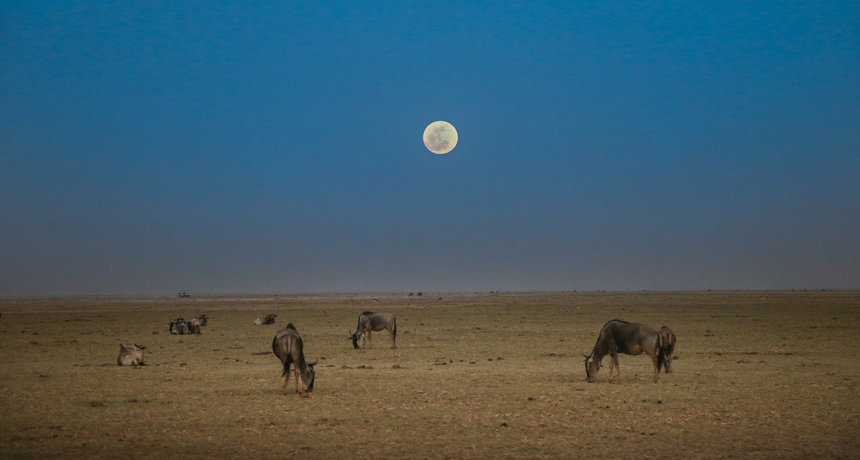 |
| Moonlight affects animals in many different ways. Wildebeests (a herd shown) rely on moonlight to avoid nighttime attacks by hungry lions. |
The moon has power over animals
Consider how
critters move, grow and even sing differently when the night’s light peaks
By Erin Wayman
Science News for Students
Twice a month
from March through August, or so, crowds of people gather on Southern
California beaches for a regular evening spectacle.
As onlookers
watch, thousands of silvery sardine look-alikes lunge as far onto shore as
possible. Before long, these small writhing, grunion carpet the beach.
The females dig
their tails into the sand, then release their eggs. Males wrap around these
females to release sperm that will fertilize these eggs.
This mating
ritual is timed by the tides. So are the hatchings, some 10 days later.
The emergence
of larvae from those eggs, every two weeks, coincides with the peak high tide.
That tide will wash the baby grunion out to sea.
Choreographing
the grunion’s mating dance and mass hatchfest is the moon.
Many people
know that the moon’s gravitational tug on the Earth drives the tides. Those
tides also exert their own power over the life cycles of many coastal
creatures.
Less
well-known, the moon also influences life with its light.
Explainer: Does
the moon influence people?
For people
living in cities ablaze with artificial lights, it can be hard to imagine how
dramatically moonlight can change the night landscape.
Far from any
artificial light, the difference between a full moon and a new moon (when the moon
appears invisible to us) can be the difference between being able to navigate
outdoors without a flashlight and not being able to see the hand in front of
your face.
Throughout the
animal world, the presence or absence of moonlight, and the predictable changes
in its brightness across the lunar cycle, can shape a range of important
activities.
Among them are
reproduction, foraging and communication.
“Light is possibly — maybe just after the availability of . . .
food — the most important environmental driver of changes in behavior and
physiology,” says Davide Dominoni.
He’s an
ecologist at the University of Glasgow in Scotland.
Researchers
have been cataloging moonlight’s effects on animals for decades. And this work
continues to turn up new connections.
Several
recently discovered examples reveal how moonlight influences the behavior of
lion prey, the navigation of dung beetles, the growth of fish — even birdsong.
Beware the new
moon
Lions of the
Serengeti in the East African nation of Tanzania are night stalkers. They’re
most successful at ambushing animals (including humans) during the darker
phases of the moon’s cycle.
But how those
prey respond to changing predator threats as the night’s light changes
throughout a month has been a dark mystery.
Meredith Palmer
is an ecologist at Princeton University in New Jersey. She and colleagues spied
on four of the lions’ favorite prey species for several years.
The scientists
installed 225 cameras across an area almost as big as Los Angeles, Calif. When
animals came by, they tripped a sensor.
The cameras
responded by snapping their pictures. Volunteers with a citizen science project
called Snapshot Serengeti then analyzed thousands of images.
The prey —
wildebeests, zebras, gazelles and buffalo — are all plant eaters. To meet their
food needs, such species must forage frequently, even at night.
The candid
snapshots revealed that these species respond to changing risks across the
lunar cycle in different ways.
Common
wildebeest, which make up a third of the lion diet, were the most attuned to
the lunar cycle.
These animals
appeared to set their plans for the entire night based on the moon’s phase.
During the
darkest parts of the month, Palmer says, “they’d park themselves in a safe
area.”
But as the
nights got brighter, she notes, wildebeests were more willing to venture into
places where run-ins with lions were likely.
Weighing as
much as 900 kilograms (almost 2,000 pounds), the African buffalo are a lion’s
most daunting prey.
They also were
least likely to alter where and when they foraged throughout the lunar cycle.
“They just sort of went where the food was,” Palmer says.
But as nights
got darker, the buffalo were more likely to form herds. Grazing this way might
offer safety in numbers.
Plains zebras
and Thomson’s gazelles also changed their evening routines with the lunar
cycle. But unlike the other prey, these animals reacted more directly to
changing light levels across an evening.
Gazelles were
more active after the moon had come up.
Zebras “were sometimes up and about and doing things before
the moon had risen,” Palmer says.
That may seem
like risky behavior. She notes, however, that being unpredictable might be a
zebra’s defense: Just keep those lions guessing.
Palmer’s team
reported its findings two years ago in Ecology Letters.
These behaviors
in the Serengeti really demonstrate the wide-reaching effects of moonlight,
Dominoni says.
“It’s a beautiful story,” he says. It offers “a very
clear example of how the presence or absence of the moon can have fundamental,
ecosystem-level impacts.”
Nighttime
navigators
Some dung
beetles are active at night. They depend on moonlight as a compass. And how
well they navigate depends on the phases of the moon.
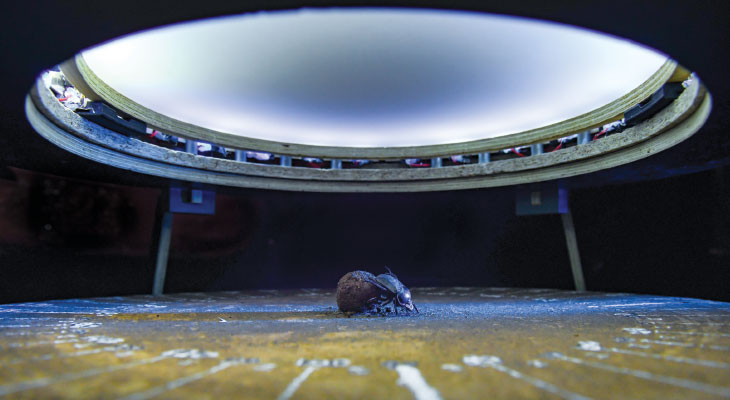 |
| Some dung beetles (one shown) use moonlight as a compass. In this arena, researchers tested how well the insects could navigate under different night sky conditions. |
One species
that comes out at night to grab and go is Escarabaeus satyrus. These beetles
sculpt dung into a ball that’s often bigger than the beetles themselves.
Then they roll
the ball away from their hungry neighbors. At this point, they will bury their
ball — and themselves — in the ground.
For these
insects, the most efficient getaway is a straight line to a suitable burial
spot, which can be many meters (yards) away, says James Foster.
He’s a vision
scientist at Lund University in Sweden.
To avoid going
in circles or landing back at the feeding frenzy, beetles look to polarized
moonlight. Some lunar light scatters off gas molecules in the atmosphere and
becomes polarized.
The term means
that these light waves tend to now vibrate in the same plane. This process
produces a pattern of polarized light in the sky. People can’t see it.
But beetles may
use this polarization to orient themselves. It might allow them to figure out
where the moon is, even without seeing it directly.
.
In recent field tests, Foster and his colleagues evaluated the strength of that signal over dung-beetle territory.
.
In recent field tests, Foster and his colleagues evaluated the strength of that signal over dung-beetle territory.
The proportion
of light in the night sky that’s polarized during a nearly full moon is similar
to that of polarized sunlight during the day (which many daytime insects, such
as honeybees, use to navigate).
As the visible
moon begins to shrink in coming days, the night sky darkens. The polarized
signal also weakens.
By the time the
visible moon resembles a crescent, beetles will have trouble staying on course.
Polarized light during this lunar phase may be at the limit of what the dung
harvesters can detect.
Scientists Say:
Light pollution
Foster’s team
described its findings, last January, in the Journal of Experimental Biology.
At this
threshold, light pollution could become a problem, Foster says. Artificial
light can interfere with patterns of polarized moonlight.
He is conducting experiments in Johannesburg,
South Africa, to see if city lights affect how well dung beetles navigate.
Like a grow lamp
In the open
ocean, moonlight helps baby fish grow.
Many reef fish
spend their infancy at sea. That may be because deep waters make a safer
nursery than does a predator-packed reef.
But that’s just
a guess. These larvae are too tiny to track, notes Jeff Shima, so scientists
don’t know a lot about them.
Shima is a
marine ecologist at Victoria University of Wellington in New Zealand. He’s
recently figured out a way to observe the moon’s influence on these baby fish.
The common
triplefin is a small fish on New Zealand’s shallow rocky reefs. After about 52
days at sea, its larvae are finally big enough to go back to the reef.
Fortunately for
Shima, adults carry an archive of their youth within their inner ears.
Fish have what
are known as ear stones, or otoliths (OH-toh-liths). They are made from calcium
carbonate. Individuals grow a new layer if this mineral every day.
In much the
same way as tree rings, these ear stones record patterns of growth. Each
layer’s width is a key to how much the fish grew on that day.
Shima worked
with marine biologist Stephen Swearer of the University of Melbourne in
Australia to match up otoliths from more than 300 triplefins with a calendar
and weather data.
This showed
that larvae grow faster during bright, moonlit nights than on dark nights. Even
when the moon is out, yet covered by clouds, larvae won’t grow as much as on
clear moonlit nights.
And this lunar
effect is not trivial. It’s about equal to the effect of water temperature,
which is known to greatly affect larval growth.
The advantage
of a full moon relative to a new (or dark) moon is similar to that of a
1-degree Celsius (1.8-degrees Fahrenheit) increase in water temperature. The
researchers shared that finding in the January Ecology.
These baby fish
hunt plankton, tiny organisms that drift or float in the water. Shima suspects
that bright nights enable larvae to better see and chow down on those plankton.
Like a child’s
reassuring night-light, the moon’s glow may allow larvae to “relax a bit,” he
says. Likely predators, such as lantern fish, shy away from moonlight to avoid
the bigger fish that hunt them by light. With nothing chasing them, larvae may
be able to focus on dining.
But when young
fish are ready to become reef dwellers, moonlight might now pose a risk.
In one study of
young sixbar wrasses, more than half of these fish coming to coral reefs in
French Polynesia arrived during the darkness of a new moon.
Only 15 percent
came during a full moon. Shima and his colleagues described their findings last
year in Ecology.
Because many
predators in coral reefs hunt by sight, darkness may give these young fish the
best chance of settling into a reef undetected.
In fact, Shima
has shown that some of these wrasses appear to stay at sea several days longer
than normal to avoid a homecoming during the full moon.
Bad moon rising
Moonlight may
flip the switch in the daily migration of some of the ocean’s tiniest
creatures.
Scientists Say:
Zooplankton
Some plankton —
known as zooplankton — are animals or animal-like organisms.
In the seasons
when the sun rises and sets in the Arctic, zooplankton plunge into the depths
each morning to avoid predators that hunt by sight.
Many scientists
had assumed that, in the heart of the sunless winter, zooplankton would take a
break from such daily up-and-down migrations.
“People generally had thought that there was nothing really
going on at that time of year,” says Kim Last.
He’s a marine
behavioral ecologist at the Scottish Association for Marine Science in Oban.
But the light of the moon appears to take over and direct those migrations.
That’s what
Last and his colleagues suggested three years ago in Current Biology.
Scientists Say:
Krill
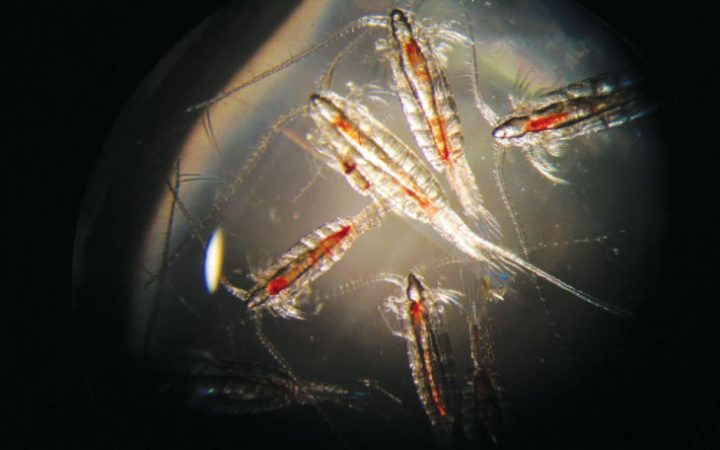 |
| The moon is the main source of light for life in the Arctic during winter. Zooplankton such as these copepods time their daily up and down trips in the ocean to the lunar schedule. |
The instruments
recorded echoes as sound waves bounced off swarms of zooplankton as these
critters moved up and down in the sea.
Normally, those
migrations by krill, copepods and other zooplankton follow a roughly circadian
(Sur-KAY-dee-un) — or 24-hour — cycle.
The animals
descend many centimeters (inches) to tens of meters (yards) into the ocean
around dawn. Then they rise back toward the surface at night to graze on plantlike
plankton.
But winter
trips follow a slightly longer schedule of about 24.8 hours. That timing
coincides exactly with the length of a lunar day, the time it takes for the
moon to rise, set and then begin to rise again.
And for about
six days around a full moon, the zooplankton hide especially deeply, down to 50
meters (some 165 feet) or so.
Scientists Say:
Copepod
Zooplankton
seem to have an internal biological clock that sets their sun-based, 24-hour
migrations.
Whether the
swimmers also have a lunar-based biological clock that sets their winter
journeys is unknown,
Last says. But
lab tests, he notes, show that krill and copepods have very sensitive visual
systems. They can detect very low levels of light.
Moonlight
sonata
The light of
the moon even influences animals that are active by day. That’s what behavioral
ecologist Jenny York learned while studying small birds in South Africa’s
Kalahari Desert.
These
white-browed sparrow weavers live in family groups. Year-round, they sing as a
chorus to defend their territory.
But during the
breeding season, males also perform dawn solos. These early morning songs are
what brought York to the Kalahari. (She now works in England at the University
of Cambridge.)
York awoke at 3
or 4 a.m. to arrive at her field site before a performance began. But on one
bright, moonlit morning, males were already singing.
“I missed my data points for the day,” she recalls. “That
was a bit annoying.”
So she wouldn’t
miss out again, York got herself up and out earlier. And that’s when she
realized the birds’ early start time was not a one-day accident.
She discovered
over a seven-month period that when a full moon was visible in the sky, males
started singing an average of about 10 minutes earlier than when there was a
new moon.
York’s team
reported its findings five years ago in Biology Letters.
Classroom
questions
This extra
light, the scientists concluded, kick-starts the singing. After all, on days
when the full moon was already below the horizon at dawn, the males started
crooning on their normal schedule.
Some North
American songbirds seem to have the same reaction to the moon’s light.
The earlier
start time lengthens the males’ average singing period by 67 percent. Some
devote just a few minutes to dawn singing; others go on for 40 minutes to an
hour.
Whether there’s
a benefit to singing earlier or longer is unknown. Something about dawn songs
may help females evaluate potential mates.
A longer performance may very well help the females tell “the
men from the boys,” as York puts it.
Founded
in 2003, Science News for Students is a free, award-winning online
publication dedicated to providing age-appropriate science news to learners,
parents and educators. The publication, as well as Science News magazine, are
published by the Society for Science & the Public, a nonprofit 501(c)(3)
membership organization dedicated to public engagement in scientific research
and education.


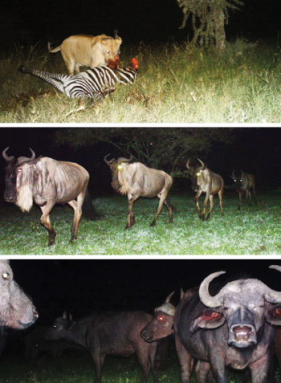
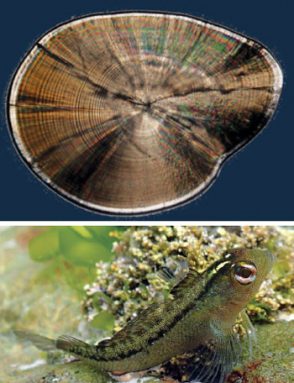
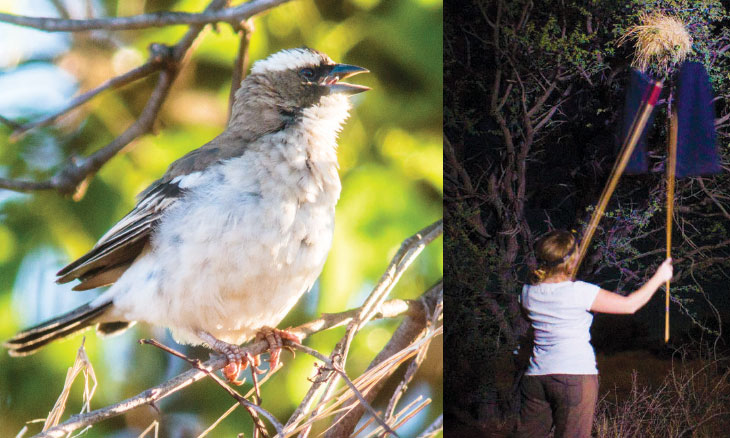
No comments:
Post a Comment